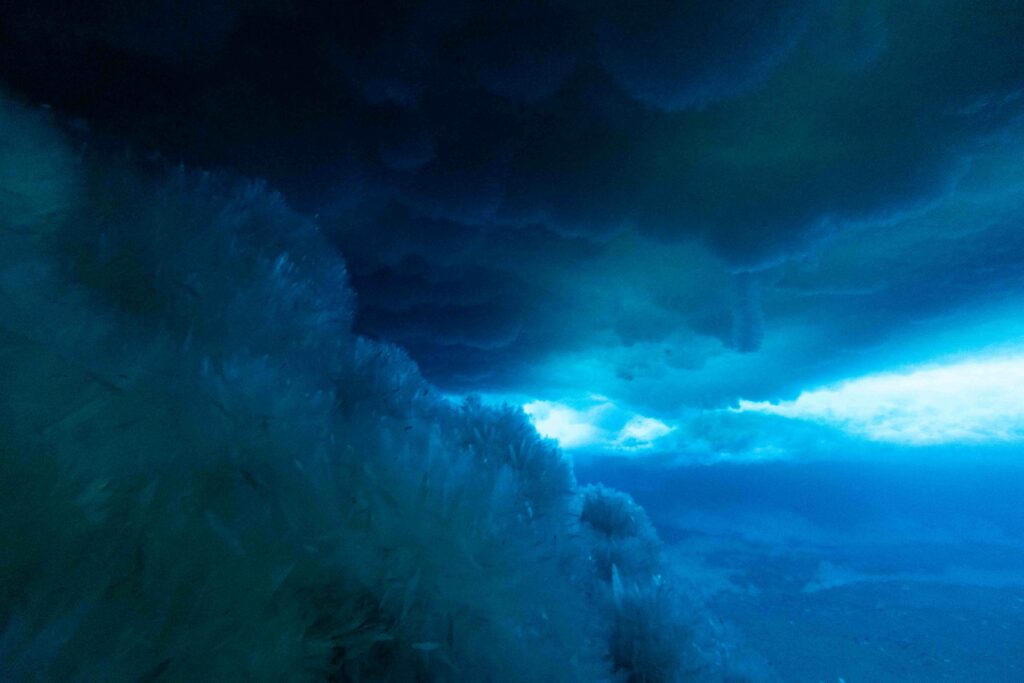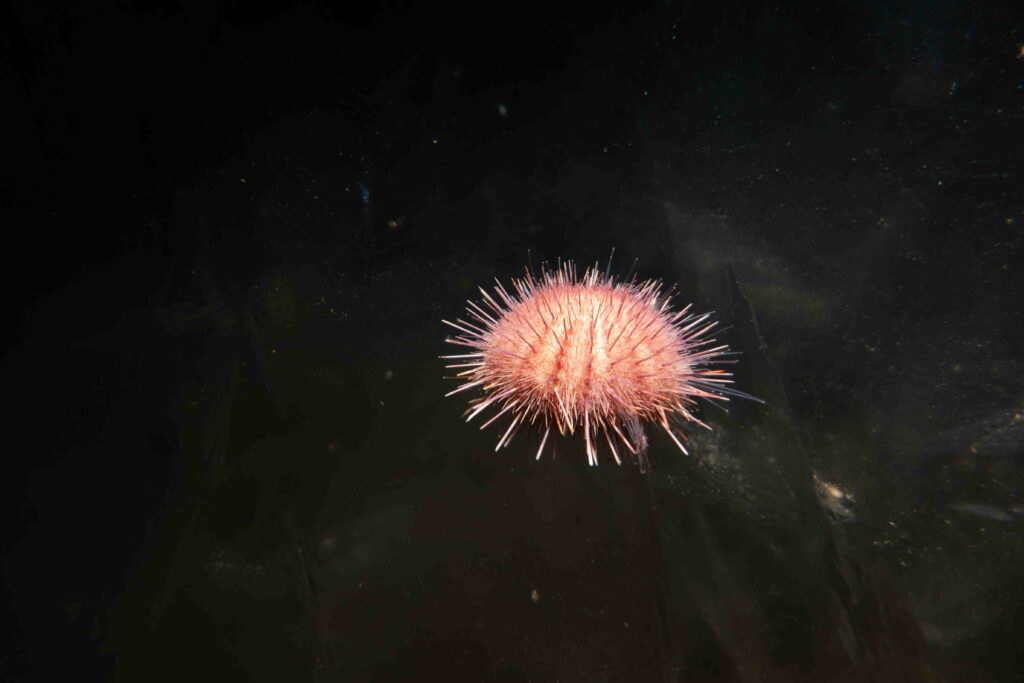Ice is as far as the eye can see in Antarctica. It varies in age from million-year-old ice sheets that are miles thick, to annual sea ice that is measured in meters. One incredible form of ice in Antarctica is anchor ice, which resides on the seafloor down to a maximum of 90 feet deep. Anchor ice typically forms plate-like crystals that overlap each other to form jagged structures on the seafloor that are resoundingly beautiful.

Ice and life come to a head in the McMurdo sound. As the anchor ice takes hold, it covers the seafloor and the animals residing on it. This makes for an odd life for the animals subject to the freeze and changes the ecology of the seafloor. Because ice has a lower density than water, Anchor ice can actually pick up the organisms it freezes around and float them to the sea ice ceiling, incorporating them and causing them to eventually die.

An example of a seafloor brimming with both life and anchor ice
With that said, the combination of life mingling with ice is amazing to witness. Most evidence points to anchor ice as damaging to many species, but I have to wonder: In all this time of life and ice intertwined, are there adaptations to life in anchor ice? Are there organisms and ecosystems that require anchor ice?

The sponge Homaxinella Balfourensis encased in anchor ice. Anchor ice can almost entirely eliminate this species from an area, evident to researchers by discolored sponge skeletons.

The sea urchin Sterechinus neumayeri, which sits on top of an anchor ice field. S. neumayeri is numerous in the shallows of McMurdo sound, causing it to inevitably live within and around anchor ice. This sea urchin is largely a grazer, living off of algae, diatoms and animals such as sponges. One interesting fact about S. neumayeri is that it co-opts items from the environment for camouflage! You’ll typically see these urchins with pieces of shells and other objects on their spines.

A fish of the Trematomus genus. These fish often have antifreeze compounds that bind to ice forming in their blood. This is a great example of animal adaptation to living at extreme cold conditions.

